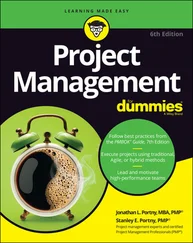2.2 Traditional Contracting Approach
2.2.1 Design Team's Appointment and Role
Having established that a Project is feasible in all respects (see Section 1.4– Common Elements for Construction Projects), the traditional way to implement a construction Project is for the Employer to appoint a Design Team. Usually that will be either a lead architectural entity or, if more appropriate for the type of Project involved (such as, for example, a new viaduct, a sewage treatment plant or a processing facility), an engineering design entity. The role of that Design Team would be to handle the following primary tasks.
1 Undertaking the design work for the entire facility (except, perhaps, for the final working/shop drawings that need to be prepared by specialists for bespoke manufacturing or complicated fabrication and installation work). This will generally also include taking the responsibility for supervising any separate specialist engineering work (such as that done by a geotechnical survey team and structural, mechanical and electrical engineers, etc.).
2 Advising on and preparing the specifications to determine the precise quality requirements for the finished facility.
3 Advising on the most appropriate bidding strategy for selection of the Contractor and any specialist Subcontractors.
4 Working with and monitoring the work of the team preparing the bidding documents for the various work packages, including the quantity surveying team preparing the bills of quantities (if applicable). [Note: EPC Projects will not generally have bills of quantities, due to there being no detailed design available.]
5 Organising the entire bidding process for the construction work (including the separate bid packages for any specialist Subcontractors).
6 Advising on the bids received for the construction work and specialist subcontracted work.
7 Arranging for signing of the construction contract and subcontracted work packages by the Employer.
8 Administering the entire construction process, including:supervising the construction work right through to completion of the commissioning activities and handover of the completed facility from the Contractor to the Employer;monitoring the Contractor's and Subcontractors' work quality and progress;issuing instructions in respect of any changes needed; andclosing out the construction contract and the subcontracts (including advising, in conjunction with the cost engineering team and/or quantity surveying team, on the settlement of all commercial matters and any claims with the Contractor and Subcontractors).
2.2.2 Employer's Participation
Beyond appointing the Design Team, under the Traditional Contracting approach the Employer's participation usually also encompasses the following.
1 Approving the issuance of bidding documents, in which the Employer either takes on 100% of certain risks or shares those risks with the Contractor.
2 Allocating risk sharing – an example of where the Employer would usually accept the entirety of a risk is in respect of the subsoil proving to be of poor quality, leading to higher costs for the foundations. An example of a risk typically shared would be in regard to the occurrence of exceptionally bad weather, where the Contractor would be entitled to extra time for completing the work but for which no monetary compensation would be payable to the Contractor. However, the Contractor would be relieved of the responsibility for paying Liquidated Damages for delayed completion due to this occurrence.
3 Arranging separately for certain key materials, goods and/or equipment to be supplied and/or installed by entities other than the Contractor.
4 Reviewing commercial bids received from construction companies for building what the Design Team's drawings and specifications show, where the Contractor's price is often based on the bills of quantities that are provided by the Employer's Team.
5 Awarding the Project implementation work to the bidder considered to be offering the best deal to the Employer (usually the lowest price, provided that the time-frame for completion is acceptable to the Employer).
2.2.3 Contractor's Role and Responsibilities
The Contractor's role and responsibilities under the Traditional Contracting approach are as follows.
1 Preparing and submitting a commercial bid for the Project, based on the drawings and specifications prepared by the Design Team. That will most likely be against bills of quantities provided by the Employer's Team, which the Contractor can assume accurately reflect what is needed to be provided in respect of the physical work for the completed facility.
2 After award of the construction contract for the Project:ordering the required materials, goods, and equipment in line with the specification requirements,providing and supervising all labour and construction equipment necessary for constructing, testing, and commissioning the completed facility, andhanding the completed facility over to the Employer for occupation/use.
3 Rectifying, at no cost to the Employer, any defects found in the completed facility during the warranty period following handover (often referred to as the ‘defects liability period’).
2.2.4 Traditional Approach Advantages
It should be noted that the prime advantage of employing the Traditional Contracting approach is that it provides much more confidence about the Project being handed over by the designated completion date than with almost any other approach to construction work, provided always that a competent Contractor has been selected. This is because there is far less likely to be uncertainty about the work content, since the Detailed Design drawings will have been finalised, thereby allowing fully detailed bills of quantities to be produced. That combined level of information enables the Contractor to determine the labour and construction equipment resources very accurately, right from the time of preparing the commercial bid. The foregoing reference to the completion date is in regard only to the construction activities. It is not to say that the overall time-frame for Project completion will be quicker than with the EPC route. This is because, under the Traditional route, the Detailed Design work has to be completed before the Contractor can commence the construction activities. That is not the same case with the EPC approach.
Having a Detailed Design completed ahead of the commercial bidding phase should also ensure that delays and additional costs due to unexpected design changes in the implementation phase are very much reduced. This may well be the reason why the Traditional Contracting approach to implementing construction Projects today still has greater prevalence than any other construction Project implementation method. This can be seen by researching on the Internet to see how various governments around the world handle the implementation of construction Projects, typical of which is the South Australian government's preferred contracting strategy. 1
2.2.5 Traditional Approach Disadvantages
Under the Traditional Contracting approach, the Employer often chooses to get involved in the direct appointment of companies to undertake key elements of the Project, such as, but certainly not limited to, curtain walling, elevators, and specialist installations (e.g. air conditioning). This means that there can be many different companies involved directly with the Employer, each requiring a separate set of contract documents to be signed with the Employer. This situation can lead to difficulties for Employers when it comes to allocating responsibility and liability to the right party for anything that goes wrong in the implementation stage or, subsequently, with the completed facility. Added to this, the Employer usually shoulders the greatest financial burden for Project delays if one of the contracting parties delays any of the other contracting parties.
Читать дальше












